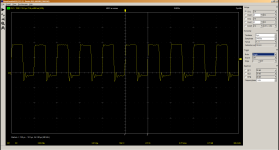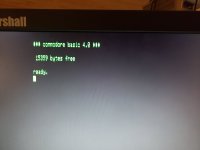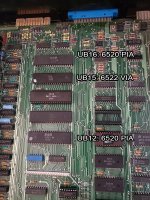That video is very telling...
Note that (horizontally and vertically) the sequence of characters repeat after every 8. The "Ready." is not being printed multiple times - it is just that the same set of 8 characters are being repeatedly displayed. That is my assessment at any rate based upon the information I have presently.
This indicates (to me) a problem with either the display multiplexers (UC8, UC9 or UC10) or the CRTC. Less likely the CRTC than the display address multiplexers.
All of the initial 'snow' indicates to me that this starts out as an intermittent fault - with the address line(s) sometimes working and sometimes not - giving the impression of the strange character behaviour. I suspect the behaviour changes once the device(s) warm up - hence a hair dryer and some targeted freezer spray could be used to find the faulty device(s).
I would scope the TAn outputs from the CRTC to the display address multiplexers (to ensure they are nice stable square waves) and then scope the SAn signals from the display address multiplexers (once the devices have warmed up and the problem 'goes away') to see if any of these signals are 'stuck' high or low.
I would, therefore, stop worrying about your HDMI box of tricks!
The 7905 (not 7605) is the -5V regulator and only provides voltage for the DRAMs. This usually doesn't get warm at all. 78xx = positive regulator, 79xx = negative voltage regulator, XX = the voltage it regulates to.
UD8 (address $Dxxx) being hotter than the rest could indicate an issue with it - but 40 deg C is not (actually) that hot. It could just mean that that is where the CPU is executing instructions whilst waiting for you to type something! This ROM would then be accessed - with the others not - making it warmer. So, I think, normal for what the computer is doing right now is on the money.
Dave



